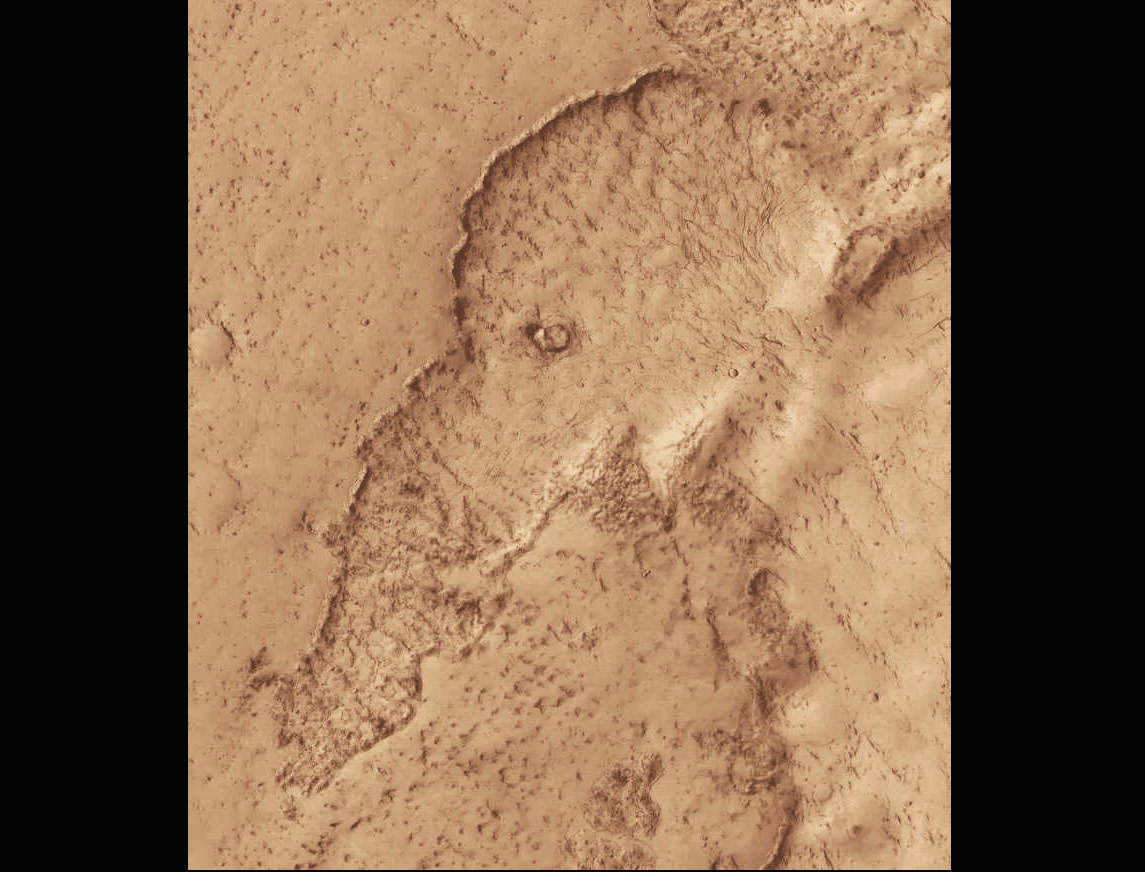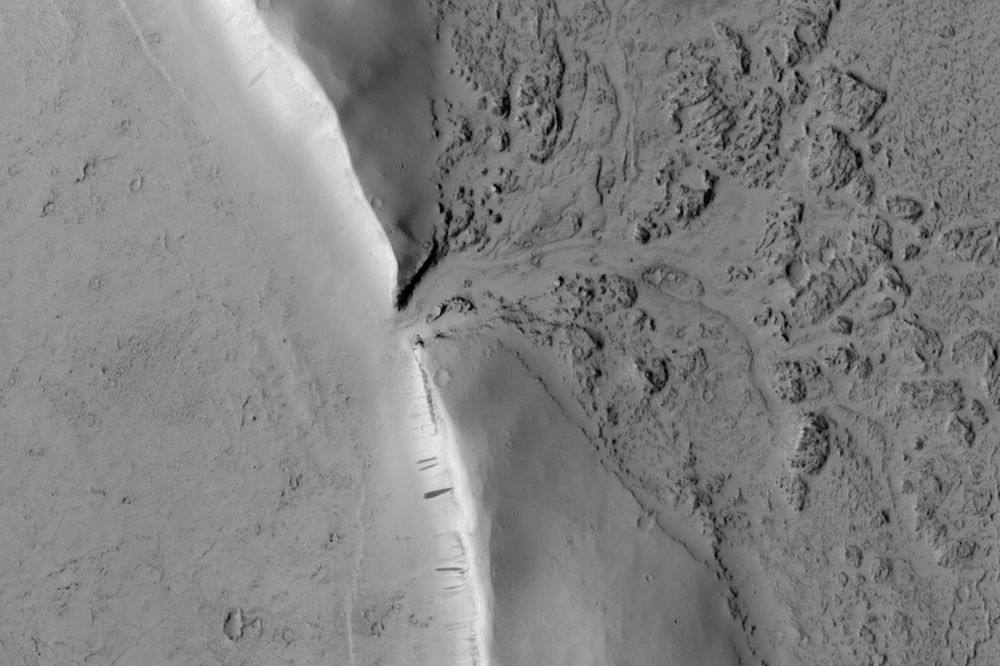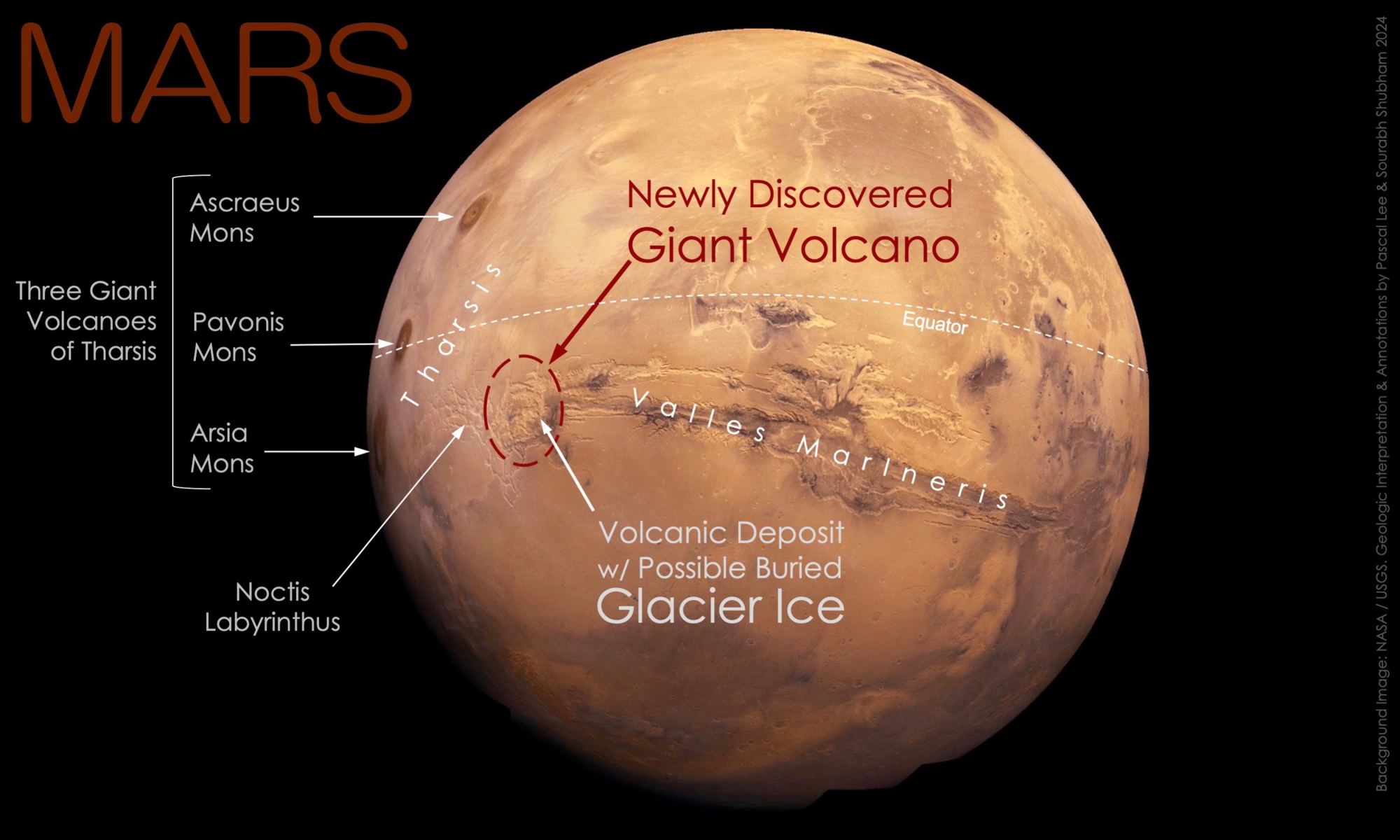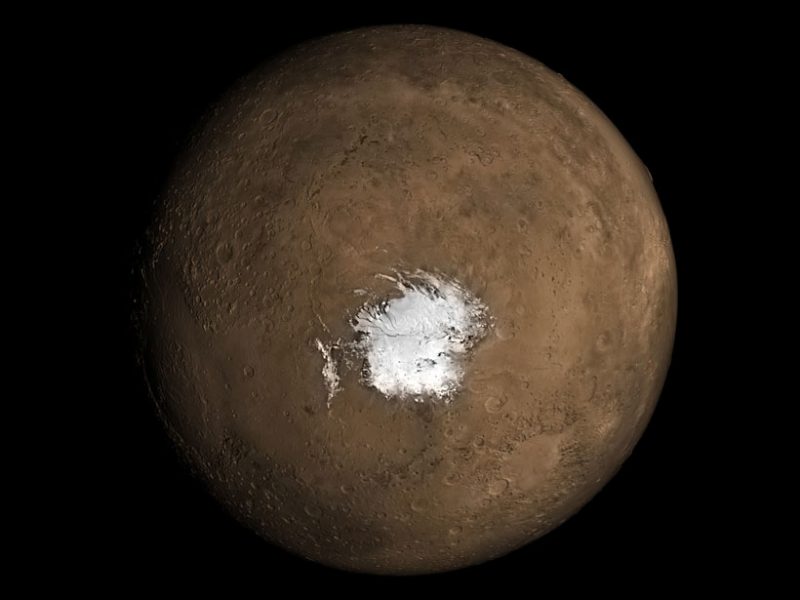Olympus Mons is well known for being the largest volcano in the Solar System. It’s joined on Mars by three other shield volcanoes; Ascraeus, Pavonis and Arsia but a recent discovery has revealed a fifth. Provisionally called Noctis volcano, this previously unknown Martian feature reaches 9,022 metres high and 450 kilometres across. Its presence has eluded planetary scientists because it has been heavily eroded and is on the boundary of the fractured maze-like terrain of Noctis Labyrinthus.
Continue reading “Mars Was Hiding Another Giant Volcano”There's a Giant Magma Plume on Mars, Bulging the Surface out Across a Vast Region

Billions of years ago, Mars was a much different place than it is today. Its atmosphere was thicker and warmer, liquid water flowed on its surface, and the planet was geologically active. Due to its lower gravity, this activity led to the largest volcanoes in the Solar System (Olympus Mons and the Thetis Mons region) and the longest, deepest canyon in the world (Valles Marineris). Unfortunately, Mars’ interior began to cool rapidly, its inner core solidified, and geological activity largely stopped. For some time, geologists have believed that Mars was essentially “dead” in the geological sense.
However, recent studies have provided seismic and geophysical evidence that Mars may still be “slightly alive.” In a recent study, scientists from the University of Arizona (ASU) challenged conventional views of Martian geodynamic evolution by discovering evidence of an active mantle plume pushing its way through the crust, causing earthquakes and volcanic eruptions. Combined with some serious marsquakes recorded by NASA’s InSight lander, these finding suggests that there is still some powerful volcanic action beneath the surface of Mars.
Continue reading “There's a Giant Magma Plume on Mars, Bulging the Surface out Across a Vast Region”You Can See the Spot Where Lava Broke Through the Wall of a Martian Crater and Began Filling it Up

At a fundamental level, Mars is a volcanic planet. Its surface is home to the Solar System’s largest extinct volcano, Olympus Mons, and another trio of well-known volcanoes at Tharsis Montes. And those are just the highlights: there are many other volcanoes on the surface. Though that volcanic activity ceased long ago, the planet’s surface tells the tale of a world disrupted and shaped by powerful volcanic eruptions.
Continue reading “You Can See the Spot Where Lava Broke Through the Wall of a Martian Crater and Began Filling it Up”There’s Evidence that Mars is Still Volcanically Active
A new study shows that Mars may very well be volcanically active. Nobody’s seen direct evidence of volcanism; no eruptions or magma or anything like that. Rather, the proof is in the water.
Continue reading “There’s Evidence that Mars is Still Volcanically Active”

